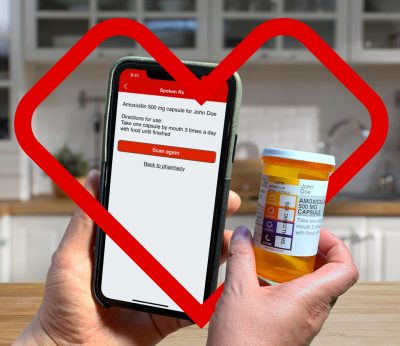
[This is the first of several planned articles on LFLegal celebrating the 33d anniversary of the Americans with Disabilities Act on July 26, 2023]
I’ve written extensively about delays in finalizing accessibility regulations in the United States. Articles on this website about delays in web accessibility regulations and delays in kiosk regulations are two examples.
But federal agencies in the United States do far more than publish regulations. (Though you’ll read below that healthcare regulations aren’t immune from delay.) The federal government also educates the public and healthcare providers about existing laws that require digital accessibility in the healthcare space. And it enforces the ADA through settlements and other legal strategies.
The Americans with Disabilities Act is 33 years old this week (On July 26, 2023). The language of the Act and its original regulations require “effective communication” in healthcare settings. In the digital world, effective communication means digital accessibility.
And of course, at its core the ADA is a law that protects civil rights and prohibits discrimination. This too means including disabled people in all digital healthcare offerings. Disability organizations and disabled people rely on the Americans with Disabilities Act to protect their rights in digital healthcare environments.
Accessibility is inclusion. Failure to make healthcare technology and content accessibility is exclusion. Let’s celebrate the ADA by living up to its promises in digital healthcare.
Jump to:
United States federal agency resources support digital healthcare accessibility
Federal agencies are not the buildings (or home offices) they operate from. If we’re lucky, agencies responsible for disability civil rights are comprised of people who do the hard work of enforcing federal laws, educating providers about their obligations, and informing people with disabilities about their rights.
Special shout out here to Steven Gordon, Civil Rights Enforcement Coordinator, Assistant US Attorney in the Eastern District of Virginia (part of the Department of Justice) who helped write and compile many of the resources listed here and who also pointed me to other helpful resources. Thank you Steven.
- April 13, 2023 “Dear Colleague” Letter from the U.S. Department of Justice about “Effective Communication Requirements in Healthcare Settings.”
- Press Release from the U.S. Attorney’s Office, Eastern District of Virginia, “U.S. Attorney’s Office Reminds Healthcare Providers of ADA’s Effective Communication Requirements“
- Department of Health and Human Services webpage titled Guidance on Nondiscrimination in Telehealth: Federal Protections to Ensure Accessibility to People with Disabilities and Limited English Proficient Persons
- US Attorneys’ Office HealthCare Accessibility Webinar Resource Page with links to relevant settlement agreements, powerpoint slides, and other government resources.
The webinar is not recorded, but you can find these links where it says “Webinar Materials, the host has uploaded 14 files.” These materials are a goldmine!
- The DOJ has done significant work ensuring that websites offering Covid vaccine information are accessible to the public. The most recent example is a settlement with Meijer Supermarket Chain. The DOJ’s press release, titled Justice Department Secures Agreement to Make Online COVID-19 Vaccine Registration Accessible for People with Disabilities at Meijer Supermarket Chain, includes links to other settlements on this issue reached with Rite Aid, Hy-Vee and Krogers.
The federal government’s work in accessible Telehealth stems from a long history of enforcing the Americans with Disabilities Act in the healthcare space. The Department of Justice ADA archives includes a page titled “Barrier Free Healthcare Initiative.” It lists (with links) over fifty settlements negotiated by the DOJ between 2011 and 2022 ensuring non-discrimination for disabled people in healthcare.
The DOJ announced the initiative with a press release on the 22d anniversary of the Americans with Disabilities Act in 2012.
Back to topDisabled people use the ADA to stop exclusion (and protect health and safety) in digital healthcare settings
ADA enforcement is not just the task of the federal government. Meeting the promise of the ADA depends on the right of disability organizations and individual disabled people to enforce the law with lawsuits, agency complaints, and collaborative strategies like Structured Negotiation.
A recent example of this is a case brought by the National Federation of the Blind, Disability Rights North Carolina, and two blind individuals against the University of North Carolina (UNC) Healthcare System. The lawsuit was filed because UNC did not provide critical healthcare information (including after-visit summaries, medication instructions, and patient and billing information) in accessible formats including large print, braille, and accessible electronic format.
In 2022 the case was partially settled, as described in a press report titled UNC Health Care System set to pay $125K in damages for violating federal disability rights law.
In June 2023 the Judge issued a final 109 (!!) page order and injunction requiring UNC Health to ensure that its communications are accessible to blind patients. Read the June 2023 Court Memorandum Opinion and Order.
Hats off to Jessie Weber and other lawyers at Brown Goldstein & Levy and Disability Rights North Carolina for pursuing this important case over many years.
Another example of private ADA enforcement in the digital healthcare space is a consent decree (a form of a lawsuit settlement) with the federal Office of Personnel Management (OPM) and a blind federal employee. OPM agreed to that health benefit information would be accessible to blind federal employees, retirees, and other plan participants.
As Rachel Weisberg, one of the lawyers who worked on the case said in the press release announcing the settlement:
Everyone should be able to access their personal health insurance information privately and independently.
Privacy and independence: two critical reasons for accessible technology and content in the healthcare setting.
Talking prescription labels protect health
For more than a quarter century my clients, co-counsel and I have relied on the Americans with Disabilities Act to power the collaborative problem solving strategy called Structured Negotiation. The collaboration has helped solve a critical health and safety problem for blind people; prescription labels that are offered in standard print only.
Walmart was the first pharmacy chain to work with the American Council of the Blind (ACB), announcing in 2012 that talking prescription labels were available in 3 stores and through its mail order pharmacy. Today, Walmart makes accessible labels available at all its stores across the United States.

And most recently, Structured Negotiation offered collaboration tools for CVS and the ACB to work together on prescription labels that are accessible to people who cannot read standard print.
In November 2021 CVS issued a press release titled Spoken Rx is the first in-app prescription reader to be developed by a national retail pharmacy. The Spoken Rx page on the CVS website starts with the line “Hi! It’s your prescription talking.”
In Structured Negotiation there is no finding of wrongdoing, no judge talking about ADA violations. Yet the sweeping civil rights law we celebrate each July 26 has been the foundation of every collaboration I’ve been engaged with for the past quarter plus century. Using the tools of Structured Negotiation to bring accessibility to prescription labels demonstrates the law’s potential to support technology that brings true inclusion to the digital healthcare space.
Back to topThe Affordable Care Act has non-discrimination regulations protecting disability rights too
Section 1557 of the Affordable Care Act prohibits:
discrimination on the basis of race, color, national origin, sex, age, or disability under any health program or activity, any part of which is receiving Federal financial assistance, including credits, subsidies, or contracts of insurance, or under any program or activity that is administered by an Executive Agency, or any entity established under title l” of the ActAffordable Care Act Section 1557
In 2020 the Department of Health and Human Services (HHS) issued regulations to implement this section. HHS’ summary of this rule includes this statement impacting digital accessibility of health programs covered by this law:
The final rule requires covered entities to make all programs and activities provided through electronic and information technology accessible; to ensure the physical accessibility of newly constructed or altered facilities; and to provide appropriate auxiliary aids and services for individuals with disabilities.HHS 2020 Summary: Final Rule Implementing Section 1557 of the Affordable Care Act
The Department of Health and Human Services is currently in the process of updating the 2020 non-discrimination regulations under Section 1557 of the Affordable Care Act. Like most efforts to adopt new regulations in the accessibility space, this effort has seen delay.
The Notice of Proposed Rule Making for the updated regulation was published in August, 2022 and the public comment period closed in October 2023. In its Fall, 2022 Unified Agenda the HHS said that the final rule would be published in March, 2023. It was good to read in that document that:
The Biden-Harris Administration has made advancing health equity and nondiscrimination in healthcare a cornerstone of its policy agenda.
But the March 2023 date came and went with no updated regulations for non-discrimination in healthcare under Section 1557..
Last month, the most recent HHS Unified Agenda, where federal agencies speculate about when things will happen, says the final rule will be published in September, 2023.
I hope it happens. I’m afraid it won’t.
More resources about Section 1557
- Read the current 2020 rule implementing Section 1557
- Read the HHS page about Section 1557 of the Affordable Care Act, which includes information about pending rules and about how to file a complaint.